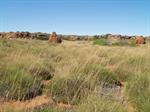
Learn the science of envrionments and biomes
Take the first step toward understanding how animals, plants and the non living environment interact. You will explore the inter-dependence that is at the heart of the natural and man made world, and build a solid foundation in this highly relevant area of environmental study.
This course is very valuable if you are planning to (or already) work in environmental management, conservation, research, education, horticulture or any other relevant industry related to the study of life science and its dynamic interaction with living (biotic) and non-living (abiotic) components of the planet.
Student Comment: "I love the course and the course material even though a bit of it seems to be a lot more in depth than I anticipated. I love it just the same as I'm learning lots. I just wish I had more time to do a lot more." Kim Stinton - Australia, studying Introduction to Ecology as part of an Advanced Certificate in Wildlife Management.
Lesson Structure
There are 7 lessons in this course:
-
Ecosystems and Populations
-
Ecology
-
Types of Ecology: Behavioural Ecology, Population Ecology, Community Ecology and Ecosystem Ecology
-
Biomes
-
Ecosystems (Energy and Nutrients)
-
The Food Web: Grazing Web, Detrital Web, Energy Flow and Imbalances
-
Populations: Diversity, Habitat, Niche, and Growth Rates
-
Interactions in the Community: Competition, Predation, Co-evolution, Succession and Climax Communities
-
The Development of Life
-
Lifespan: Average Lifespan, Evolutionary Considerations on Lifespan and Theories on the Limits of Lifespan
-
Evolution: Introduction, What Evolution Means, Evidence of Organic Evolution, The Anatomical Argument, The Physiological Argument, The Paleontological Argument, The Embryological Argument, Steps in Organic Evolution, Multicellular Organisms, The Evolution of Sex, Differentiation and Integration
-
The origin of Vertebrates: The Emergence of Man, Factors in Organic Evolution, Germ Cells and Variations, Natural Selection, Population Genetics, The Synthetic Theory, Speciation, Genetic Drift, Trans-specific Evolution, Present Day Evolutionary Debate, Human Evolution and Evolutionary Patterns
-
Animals, Parasites and Endangered Species
-
Animals in the Ecosystem: Animals in the Human Community
-
Animals
-
Phylum and Classes of the Animal Kingdom: Vertebrates with Backbones, Vertebrates without Backbones, Protozoa, Origins and Relationships, Body Organisation, The Gut, Symmetry, Protosomia, Coelom and Deuterostomia
-
Summary of Phyla: The Parazoa, The Mesozoa, The Radiata, Phylum Coelenterata and Phylum Ctenophora
-
The Acoelomate Bilateria: Phylum Platyhelminthes, Phylum Nemertina
-
The Pseudocoelomates: Phylum Nematoda, Phylum Gastrotricha, Phylum Nematomorpha, Phylum Acanthocephala, Phylum Kinorhyncha, Phylum Rotifera, Phylum Priapulida, Phylum Entoprocta and Phylum Lucifera
-
Eucoelomates (The Tentaculata): Phylum Phoronida, Phylum Ectoprocta and Phylum Brachiopoda
-
Eucoelomates (The Trochozoa): Phylum Annelida, Phylum Sipuncula, Phylum Mollusca, Phylum Arthropoda
-
Eucoelomates (The Deuterostomia): Phylum Chaetognatha, Phylum Echinodermata, Phylum Hemichordata and Phylum Chordata
-
Parasites: Human Parasites and Parasitic Plants
-
Endangered Species: The Causes of Extinction and Efforts for Preservation
-
Case Study (Threatened Animal Species in Queensland, Australia): Birds, Mammals, Fish, Frogs, Butterflies and Reptiles
-
Fungi, Tundra, Rainforests and Marshlands
-
Fungi: Introduction, Types of Fungi, The Structure of Fungi, The Reproduction of Fungi, The Physiology of Fungus, Poisoning by Fungi, The Ecology of Fungus, The Uses of Fungi, The Classification of Fungi (Oomycota, Zygomycota, Ascomycota)
-
Tundra: Introduction, The Climate and Land Formation, Plant Life on the Tundra
-
Rainforests: The Ecology, The Vegetation, Creatures of the Rainforest, The Canopy, The Under-storey, The Forest Floor and Clearing the Rainforest
-
Marshland: Introduction, Freshwater Marshes and Saltwater Marshes
-
Mountains, Rivers and Deserts
-
Mountains: The Formation of Mountains, The Importance of Mountains, Volcanoes and Erosion
-
Rivers: The Formation of Rivers, Dams (Ponds), River Catchments, Urban Catchments, How can we clean up Stormwater
-
Reducing Pollutants
-
Sedimentation
-
Nutrients
-
Other Toxicants
-
Damming of Rivers
-
Deserts: Wind Systems, Land Formation, Plant Adaptations to the Desert, Animal Adaptations to the Desert, Human Impacts on Deserts, The Spreading Deserts
-
Shallow Waters
-
Estuaries
-
Major Natural Processes Occurring in Coastal Environments: Climatological, Physical, Biological and Mixing Processes; Factors Influencing Estuaries; The Estuary as a Nursery; Estuaries and People
-
Rocky Shores: Threats to Rocky Shores and What Individuals Can Do
-
Sandy Shores: Threats to the Sandy Shore
-
Coral Reefs: Corals, The Composition of Coral Reefs
-
Types of Coral Reefs: Fringing Reefs, Barrier Reefs and Atolls
-
The Origin of Coral Reefs: Flora and Fauna on Atolls; Petroleum
-
Ecological Problems
-
The Greenhouse Effect
-
Global Warming: Difference Between Greenhouse Effect and Global Warming, Climate Change, A Growing Awareness, Carbon Dioxide
-
International Efforts to Combat Climate Change: IPCC, UNFCCC, Kyoto Protocol, COP15 and The World Watch Institute
-
The Actual and Potential Effects: Global Temperature Rise, Sea Level Rise, Impacts on Weather Systems
-
Greenhouse Gases (GHG): Water Vapour, Methane, Nitrous Oxide and Fluorocarbons
-
Ozone: The Ozone Layer, The Causes of Ozone Depletion, Aerosols, Refrigeration and Air Conditioning, Foam and Phasing out CFCs
-
The Effects of Ozone Depletion: Skin Cancers, Immune System Response, Impacts on Crops and Forests and Impacts on Marine Life
-
Poisons: Poisons in the Home and Other Household Poisons
-
Poisons on the Farm: Pesticides, Characteristics of Pesticides and Summary of Pesticides
-
Environmental and Health Impacts of Pesticides: Soil, Water Air Vegetation, Wildlife, Effects of Chemicals on Humans and Animals, Acute Poisoning, Chronic Poisoning and Different Types of Effects
-
Waste Material: Rubbish Dumps or Tips, Recycling, Plastics, Gas from Landfills and Domestic Waste
Aims
-
To identify the components of an ecosystem and how they interact.
-
Discuss the basis of the Theory of Evolution and those elements of science which influenced the theory.
-
To discuss the existence of animals in the ecosystem.
-
To discuss the presence of plant life in a range of ecological situations
-
To discuss the ecological features of mountains, rivers and deserts.
-
To discuss the ecological features of shallow water regions and coral seas.
-
To discuss the ecological implications of human activities on the environment.
What You Will Do
-
Observe an ecosystem in your local area.Identify the inhabitants of the ecosystem and their location in the food web of that system.
-
Compare the similarities and differences between the detrital web and the grazing web
-
Discuss what scientific discoveries the Theory of Evolution, both past and present, is based on.
-
List and explain the four arguments of evolution.
-
Define Natural Selection.
-
Discuss how genetics are related to evolution.
-
Go to an ecological environment (as natural and un-human interfered as possible) and observe the plants and relationships that exist.
-
Visit a local stream or river. Observe the condition of the stream, particularly the presence of indigenous vegetation and its affect on stream bank condition. Also look for evidence of human activity on the condition of the stream or river
-
Discuss, in your own words, the theories which have been advanced in the past regarding the formation of coral reefs.
Why Do We Need to Understand Ecology?
 All life on earth is connected -animals, plants, humans. The way in which we are interconnected is critical to our long term survival. When these interconnections are not sustained properly; a species runs the risk of declining in numbers, and possibly even becoming extinct.
All life on earth is connected -animals, plants, humans. The way in which we are interconnected is critical to our long term survival. When these interconnections are not sustained properly; a species runs the risk of declining in numbers, and possibly even becoming extinct.
The Causes of Endangerment or Extinction
Species become extinct for a number of reasons:
The destruction of habitats is the primary cause and is affected by the following:
- The drainage of wetlands
- The conversion of shrub lands to grazing lands
- The cutting and clearing of forests. This is especially true in the tropics, where
- the rainforests will be completely eliminated by the year 2010 if destruction
- continues at the present rate.
- Urbanisation and suburbanisation
- Highway construction.
- The construction of dams.
As the remaining habitats become fragmented into 'islands' the animal populations crowd into these smaller spaces, thus causing further destruction of habitats.
The species in these small "islands' lose contact with other populations of their own species. This reduces the genetic variation, and makes them less adaptable to environmental change. These small populations are highly vulnerable to extinction (e.g. from natural disasters such as fires), and for some species, the fragmented habitats become too small to support a viable population.
Since the beginning of the seventeenth century, the commercial exploitation of animals for food and other products has been the cause of many species becoming extinct or endangered. For example, the slaughter of the great whales for oil and meat brought them to the very edge of extinction, before international treaties restricted the harvesting of these animals. The African rhinoceroses that are killed for their horns have also become critically endangered. In the nineteenth century the great auk and the American passenger pigeon became extinct because of over hunting, while the California parakeet became extinct because of a combination of habitat destruction and over hunting.
The introduction of diseases, parasites and predators, against which the indigenous flora and fauna have no defence, has also exterminated or greatly reduced some species. For example, blight was accidentally introduced to the North American hardwood forests with the result of the complete elimination of chestnut trees. In Australia, the introduction of species such as cats and foxes has resulted in the extinction of at least forty species, probably the greatest rate of modern extinctions seen in any country, as well as the decline of many other species.
Another important cause of extinctions is pollution. Toxic chemicals and especially chlorinated hydrocarbons such as dichloro-diphenyl-trichloroethane (DDT) and the polychlorinated biphenyls (PCB's) have become concentrated in food chains. This affects mainly those animals which are at the end of the food chain, where the accumulation of such chemicals reaches its highest concentration.
Both DDT and PCB's interfere with the calcium metabolism of birds. This causes soft-shelled eggs and malformed chicks. PCB's also impair reproduction in some carnivorous animals.
What Next?
You can enroll and start studying with us any time. So take the next step: enrol now, or contact us for more details, and begin your exploration of this fascinating and highly relevant area of environmental science.
